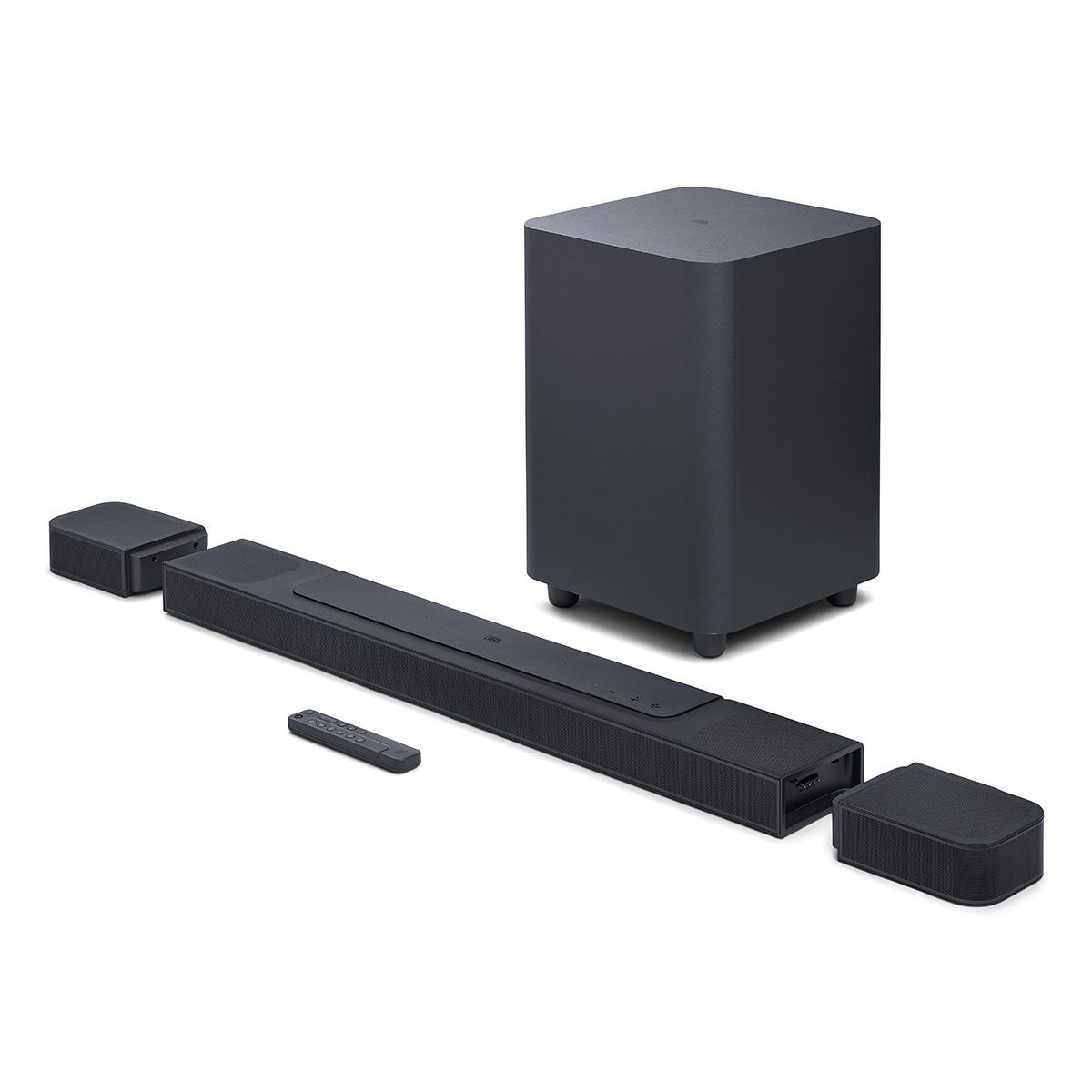
When it comes to upgrading your TV's sound, today's soundbars offer impressive home theater experiences. Let's compare two popular but very different options: the premium JBL Bar 1000 ($1,139.95) and the mid-range Klipsch Flexus Core 200 ($499.99).
Home theater audio has evolved dramatically in recent years. Instead of complex receiver-based systems with multiple speakers and cables, soundbars now deliver immersive sound in much simpler packages. The key innovations driving this are:
The JBL Bar 1000 is a true 7.1.4 system, meaning it has:
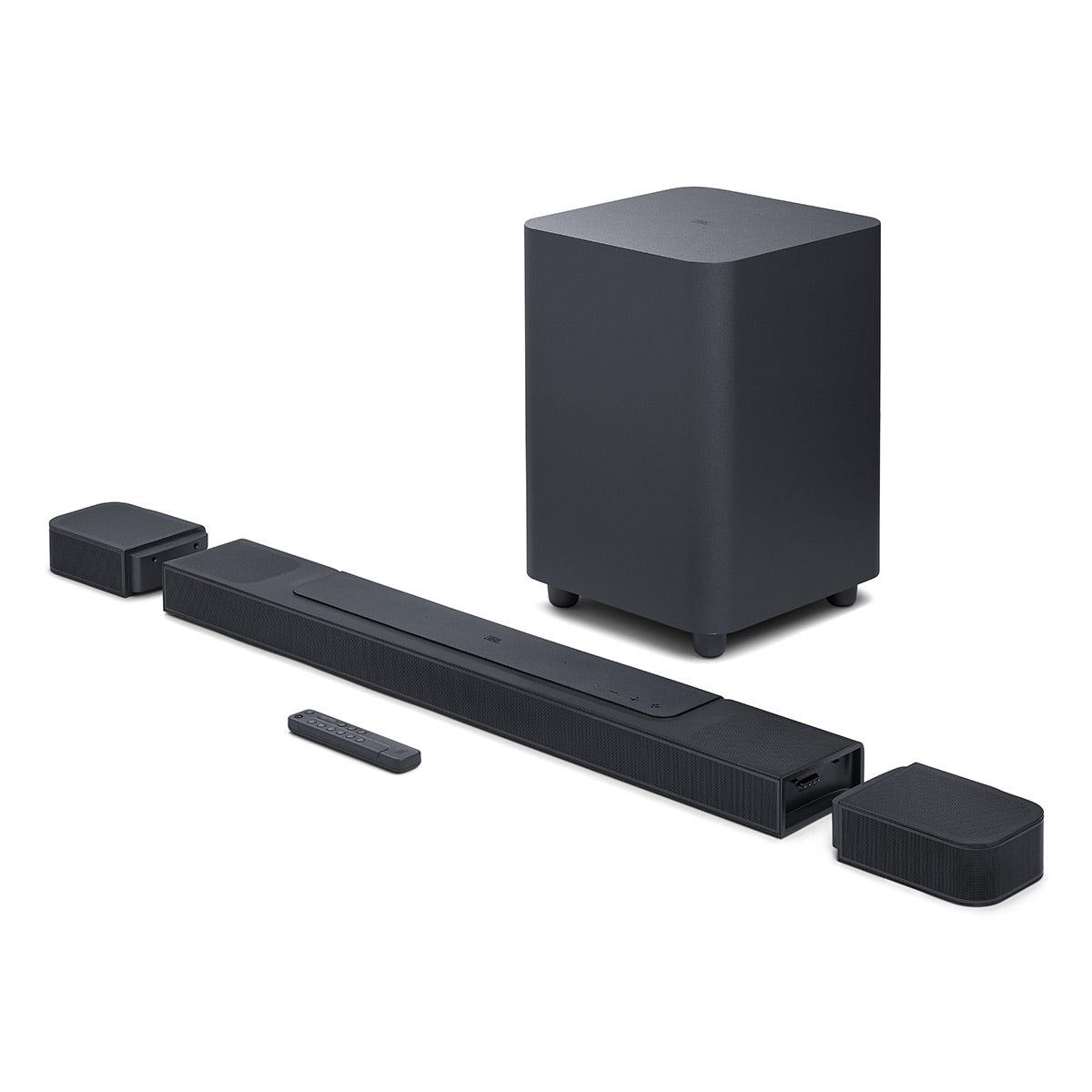
The Klipsch Flexus Core 200 takes a more streamlined 3.1.2 approach:
Having tested both systems, the performance differences are notable but nuanced. The JBL system, unsurprisingly, creates a more encompassing sound field with its additional speakers. The detachable rears and dedicated subwoofer deliver true surround sound that's especially noticeable in action movies and games.
The Klipsch, while more limited in speaker count, impresses with its audio quality and clever engineering. Its horn-loaded tweeter (a Klipsch signature technology that helps direct sound more precisely) delivers exceptionally clear dialogue. The built-in subwoofers provide surprisingly capable bass, though they can't match the JBL's dedicated 10" unit for deep impact.
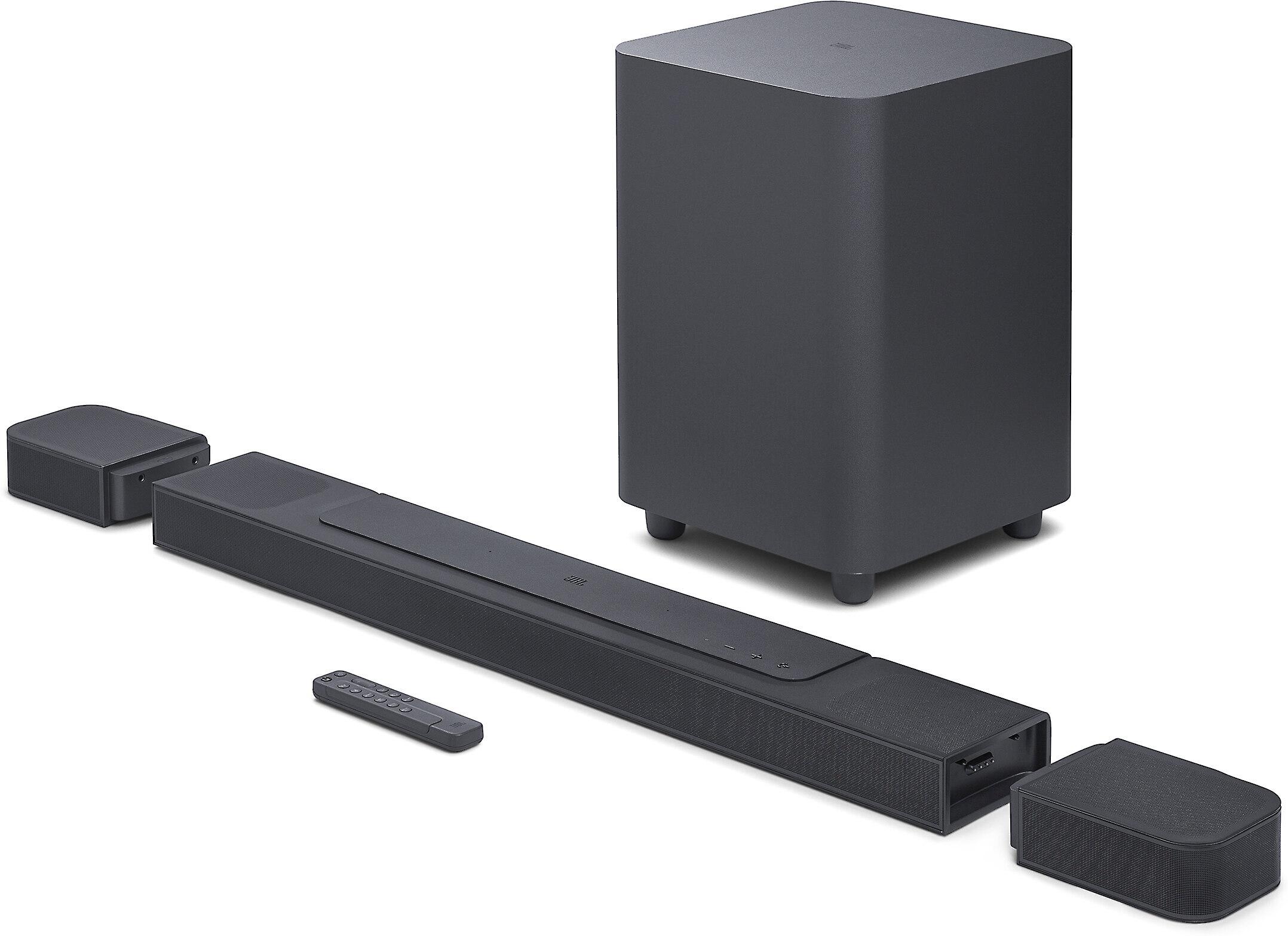
For movies, both systems handle Dolby Atmos content well, creating height effects when sounds like helicopters or rain should come from above. The JBL's additional height speakers and rear channels create a more convincing "bubble" of sound. However, the Klipsch still delivers an engaging experience that's notably better than traditional 2.1 or 3.1 soundbars.
For music, the differences are less dramatic. Both systems offer detailed, room-filling sound. The JBL's separate subwoofer provides deeper bass for electronic music and hip-hop, while the Klipsch's horn tweeter gives it an edge with vocal clarity in acoustic and classical pieces.
Released in early 2024, the Klipsch Flexus Core 200 represents newer technology in some ways, particularly its Transport wireless technology for expansion. The JBL Bar 1000, while slightly older, offers more complete features out of the box.
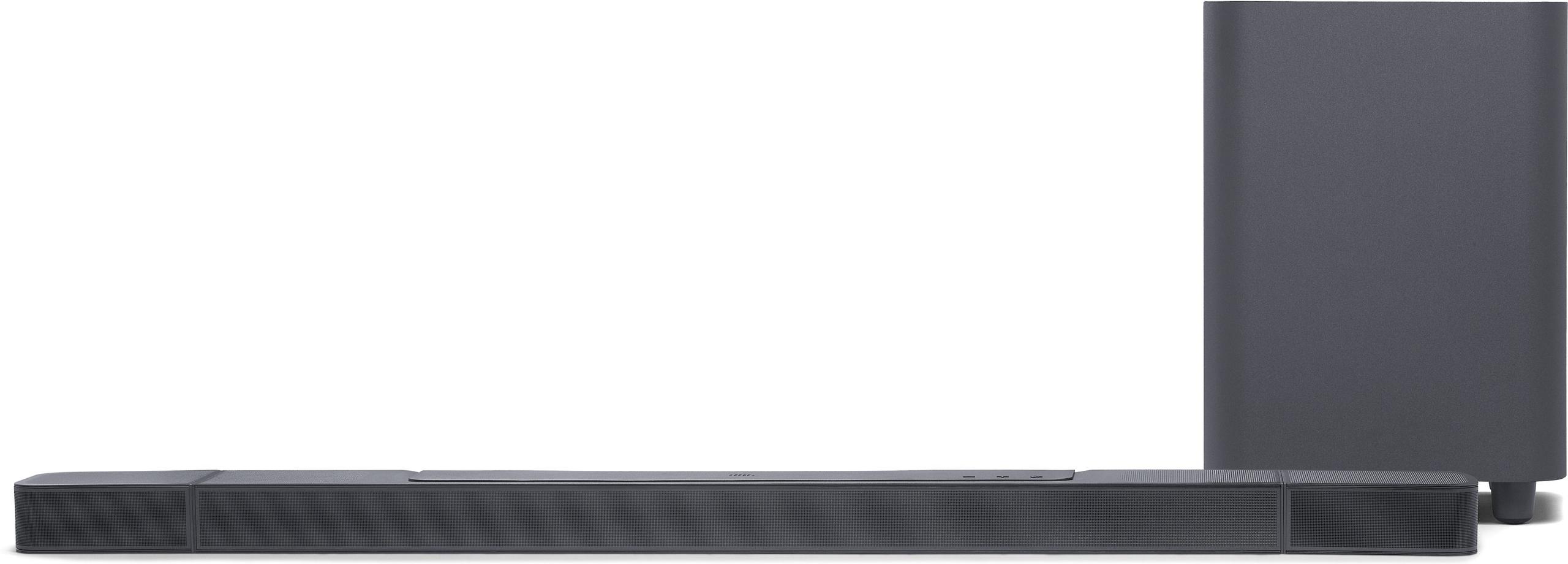
The value equation depends largely on your space and needs:
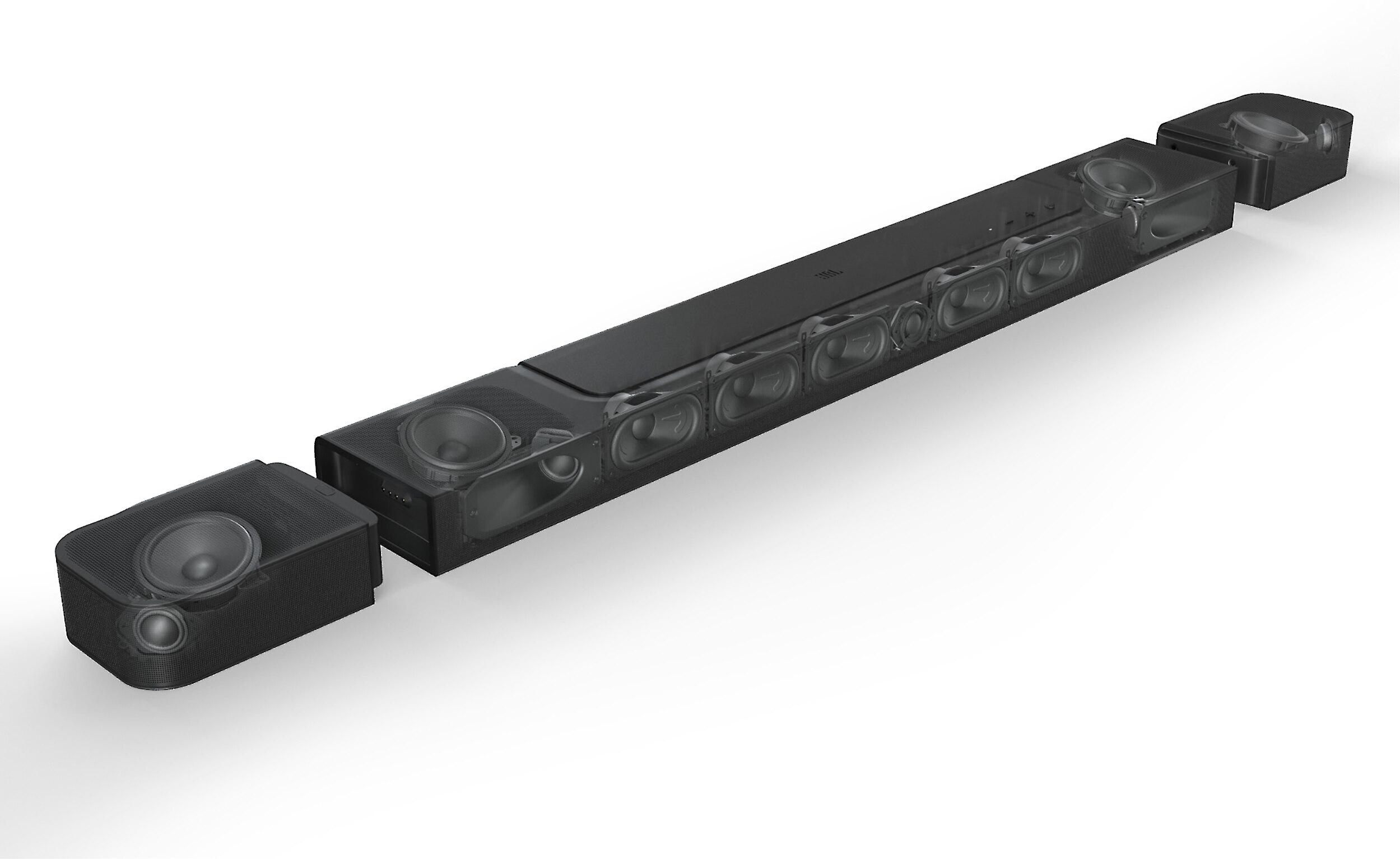
Room size and layout significantly impact soundbar performance. The JBL system, with its separate subwoofer and rear speakers, offers more flexibility in larger spaces. You can position the subwoofer where it sounds best and place the rear speakers behind your seating area.
The Klipsch's more compact design works particularly well in smaller rooms where a full surround setup might be overwhelming. Its built-in subwoofers mean one less component to place, though you do lose some flexibility in bass optimization.
Both systems offer modern connectivity, but with different emphases:
JBL Bar 1000:
Klipsch Flexus Core 200:
Choose the JBL Bar 1000 if:
Choose the Klipsch Flexus Core 200 if:
Both systems represent significant improvements over basic TV audio, but they serve different needs and budgets. The JBL offers a premium, complete solution, while the Klipsch provides excellent core performance with room to grow.
The soundbar market continues to evolve, with manufacturers focusing on better virtual surround processing and wireless connectivity. The Klipsch's newer platform might see more features added through updates, while the JBL's more complete hardware package ensures it will remain capable for years to come.
In the end, both the JBL Bar 1000 and Klipsch Flexus Core 200 deliver excellent audio experiences for their respective price points. Your choice should primarily depend on your room size, budget, and whether you prefer a complete solution now or the flexibility to expand later.
| JBL Bar 1000 ($1,139.95) | Klipsch Flexus Core 200 ($499.99) |
|---|---|
| Channel Configuration - Determines how immersive the sound experience is | |
| 7.1.4 (full surround with 4 height channels) | 3.1.2 (front speakers with 2 height channels) |
| Subwoofer Configuration - Bass impact and room-filling capability | |
| Separate 10" wireless subwoofer | Dual 4" built-in subwoofers |
| Total System Power - Affects maximum volume and audio headroom | |
| 880W RMS | 185W RMS |
| Height Speaker Configuration - Important for Dolby Atmos effect | |
| 4 up-firing drivers (2 in bar, 2 in rear speakers) | 2 up-firing drivers (in main bar only) |
| Expandability - Future upgrade potential | |
| Complete system, no expansion needed | Can add wireless surrounds and subwoofer |
| Room Size Suitability - Match to your space | |
| Medium to large rooms (15x20 feet+) | Small to medium rooms (up to 15x20 feet) |
| HDMI Inputs - Connectivity flexibility | |
| Multiple with 4K/HDR passthrough | Single eARC port, no passthrough |
| Additional Features - Extra functionality beyond basic audio | |
| Built-in Wi-Fi streaming, room calibration, detachable battery-powered rears | App control with EQ, Klipsch Transport wireless tech |
The JBL Bar 1000 ($1,139.95) provides a more immersive movie experience with its 7.1.4 configuration and true surround sound from detachable rear speakers. The Klipsch Flexus Core 200 ($499.99) still delivers good movie performance but with a more limited 3.1.2 setup.
The JBL Bar 1000 costs $1,139.95, while the Klipsch Flexus Core 200 is priced at $499.99, making it less than half the price of the JBL system.
The JBL Bar 1000 delivers stronger bass with its dedicated 10" wireless subwoofer. The Klipsch Flexus Core 200 uses dual 4" built-in subwoofers which provide good but less powerful bass.
Yes, both support Dolby Atmos, but the JBL Bar 1000 has four up-firing speakers for better height effects, while the Klipsch Flexus Core 200 has two up-firing speakers.
The Klipsch Flexus Core 200 is ideal for small to medium rooms up to 15x20 feet. The JBL Bar 1000 might be overkill for smaller spaces and works better in larger rooms.
The Klipsch Flexus Core 200 can be expanded with additional surrounds and a subwoofer. The JBL Bar 1000 comes complete with no expansion needed.
The Klipsch Flexus Core 200 has a simpler setup with fewer components. The JBL Bar 1000 requires more setup but includes automatic room calibration.
Both work excellently for TV shows, with the JBL Bar 1000 offering built-in streaming capabilities and the Klipsch Flexus Core 200 providing especially clear dialogue through its horn-loaded tweeter.
The JBL Bar 1000 provides a more immersive gaming experience with true surround sound and more precise sound positioning. The Klipsch Flexus Core 200 offers good gaming performance but with less surround effect.
The JBL Bar 1000 includes a wireless subwoofer. The Klipsch Flexus Core 200 has built-in subwoofers but can add an optional wireless subwoofer later.
The JBL Bar 1000 offers more connectivity with multiple HDMI inputs and 4K passthrough, while the Klipsch Flexus Core 200 has more basic connectivity with one HDMI eARC port.
If you're building a dedicated home theater setup, the JBL Bar 1000 justifies its higher price with better surround sound and more powerful performance. For casual viewing, the Klipsch Flexus Core 200 provides excellent value at its lower price point.
We've done our best to create useful and informative comparisons to help you decide what product to buy. Our research uses advanced automated methods to create this comparison and perfection is not possible - please contact us for corrections or questions. These are the sites we've researched in the creation of this article: zdnet.com - jbl.com - jbl.com - pcrichard.com - rtings.com - d21buns5ku92am.cloudfront.net - ro.harmanaudio.com - target.com - harmanaudio.com - dell.com - mm.jbl.com - dolby.com - jbl.com.my - videoandaudiocenter.com - soundandvision.com - avnirvana.com - avsforum.com - cnet.com - klipsch.com - klipsch.com - youtube.com - assets.klipsch.com - klipsch.com - worldwidestereo.com - klipsch.com - crutchfield.com - digitaltrends.com